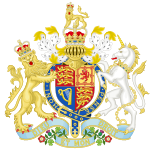- Matrimonial Causes Act 1857
-
The Matrimonial Causes Act 1857 (20 & 21 Vict., c. 85) was an Act of Parliament passed by the Parliament of the United Kingdom. The Act reformed the law on divorce, moving litigation from the jurisdiction of the ecclesiastical courts to the civil courts, establishing a model of marriage based on contract rather than sacrament and widening the availability of divorce beyond the privileged few.
Contents
Background
Before the Act, divorce was governed by the ecclesiastical Court of Arches and the canon law of the Church of England. As such, it was not administered by the barristers who practised in the common law courts but by the "advocates" and "proctors" who practised civil law from Doctors' Commons, adding to the obscurity of the proceedings.[1] Divorce was de facto restricted to the very wealthy as it demanded either a complex annulment process or a private bill, either at great cost. The latter entailed sometimes lengthy debates about a couple's intimate marital relationship in public in the House of Commons.[2]
A bill to create a civil court to regulate divorce and to allow it to proceed by ordinary civil litigation had been proposed by Lord Aberdeen's coalition but had made no progress. The procedure had largely been designed by Lord Chief Justice Lord Campbell. When Lord Palmerston came to power in 1855, the bill was relaunched. The bill was introduced in the House of Lords and supported by Archbishop of Canterbury John Bird Sumner and the usually conservative Henry Phillpotts, Bishop of Exeter.[3]
The bill proved controversial, raising particular opposition from future Liberal Party leader William Ewart Gladstone, who saw it as an usurpation of the authority of the Church, and from Bishop of Oxford Samuel Wilberforce.[3] Palmerston eventually steered the bill through Parliament,[3] despite Gladstone's attempted filibuster.
The Act
The Act created a new Court of Divorce and Matrimonial Causes and gave it jurisdiction to hear and decide civil actions for divorce. Further, it gave rights of audience both to common law barristers and civil law advocates, removing the advocates' previous monopoly in divorce proceedings.[1]
It came into force on 1 January 1858.[2]
Implementation and impact
Such a court would require sensitive but firm supervision and Palmerston appointed Sir Cresswell Cresswell as its first judge-in-ordinary with bipartisan support. Cresswell was not an obvious appointment. A mercantile lawyer who had been somewhat diffident as a junior judge in the Court of Common Pleas, Cresswell was a bachelor with a reputation for impatience and a short temper. However, he succeeded superbly in establishing the authority, dignity and efficiency of the new regime.[2]
In the first year of operation of the Act, there were three hundred divorce petitions, as against three in the previous year and there were fears of chaos. Campbell sat in some of the earliest hearings but was afraid that he had created a "Frankenstein". However, Cresswell took a managerial role in regulating the new flood of litigation. He showed great sensitivity in dealing with genuine grievances but upheld the sanctity of marriage and was capable of being severe when necessary. However, he was also instrumental in moving the legal view of divorce from that based on a sacrament to that based on contract. He worked with colossal speed and energy, deciding over one thousand cases in six years, only one of which was reversed on appeal. He achieved some public fame and huge respect, popularly being held as representing the five million married women of Britain.[2]
The Act was also an important enabling step in unifying and rationalising the legal system of England and Wales, a process that was largely effected by the Judicature Acts (1873–1875). It also catalysed the unification of the legal profession. By the abolition of any remaining important role for canon lawyers, it ultimately led to the demise of the Doctors' Commons.[1][4]
See also
References
Bibliography
- Cornish, W. & Clarke, G. (1989). Law and Society in England 1750-1950. London: Sweet & Maxwell. pp. 382–398. ISBN 0421311509.
- Cretney, S. M. (2005). Family Law in the Twentieth Century: A History. Oxford: Oxford University Press. pp. Ch.5–6. ISBN 0199280916.
- Diamond, M. (2003). Victorian sensation. Anthem Press. pp. 124–126. ISBN 1-84331-150-X.
- Fenn, H. E. (1910). Thirty Five Years in the Divorce Courts. London: T Werner Laurie.
- Getzler, J. S. (2004) "Cresswell, Sir Cresswell (1793–1863)", Oxford Dictionary of National Biography, Oxford University Press, accessed 12 August 2007 Subscription or UK public library membership required
- Horstman, A. (1985). Victorian divorce. Taylor & Francis. ISBN 0709937652.
- Squibb, G. D. (1977). Doctors' Commons. Oxford: Oxford University Press. ISBN 0-19-825339-7.
- Swabey & Tristram (1858–65) Probate and Divorce Reports, vols.1-4, English Reports, vol.164
- Woodhouse, M. K. (1959). "The Marriage and Divorce Bill of 1857". American Journal of Legal History (Temple University) 3 (3): 273. doi:10.2307/843999. JSTOR 843999.
United Kingdom legislation Pre-Parliamentary legislation Acts of Parliament by states preceding
the Kingdom of Great BritainActs of the Parliament of England to 1483 · 1485–1601 · 1603–1641 · Interregnum (1642–1660) · 1660–1699 · 1700–1706
Acts of the Parliament of Scotland
Acts of the Parliament of Ireland to 1700 · 1701–1800Acts of Parliament of the
Kingdom of Great Britain1707–1719 · 1720–1739 · 1740–1759 · 1760–1779 · 1780–1800
Acts of Parliament of the United Kingdom of
Great Britain and Ireland and the United
Kingdom of Great Britain and Northern IrelandChurch of England Measures Legislation of devolved institutions Acts of the Scottish Parliament
Acts and Measures of the Welsh Assembly
Acts of the Northern Ireland Assembly / of the Northern Ireland Parliament
Orders in Council for Northern IrelandSecondary legislation Categories:- United Kingdom Acts of Parliament 1857
- English laws
- Legal history of England
- Divorce
- Family law in the United Kingdom
Wikimedia Foundation. 2010.

